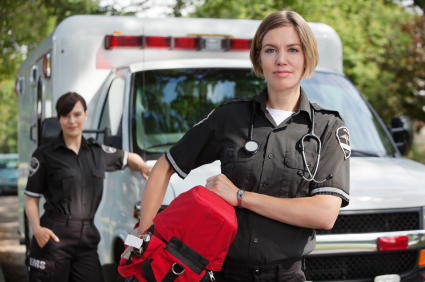 What should you do when you experience a sudden fall accident that results in a potentially serious hip fracture or related injury? Firstly, do not attempt any sudden or major movement after the accident.
What should you do when you experience a sudden fall accident that results in a potentially serious hip fracture or related injury? Firstly, do not attempt any sudden or major movement after the accident.
If you have a personal emergency response system, press your help alert button to signal for local emergency medical assistance. Wait for the paramedics to treat you on-site and move you safely into an ambulance. If feasible, have a family member or friend come with you to the emergency room of the local hospital. In a panic or high-stress state, he or she can help you answer any questions from the medical staff and to consider treatment options.
We advise all older adults and seniors to have at the ready a personal emergency medical data form (stored on the refrigerator door, in the car and purse) that emergency responders and hospital staff can use to treat you more effectively. In decades past, this form was known as a Vial of Life and was stored inside the compartments of the refrigerator. First Response has updated and modernized these standard forms to conform more to the end user- namely the emergency responders and the doctors who actually are providing treatment after the accident.
What Happens At The Hospital Emergency Room After Admission
Emergency Responders at the accident scene and hospital staff at the ER are likely to ask these type of questions:
- Have you been diagnosed with any medical conditions; chronic or otherwise?
- Have you recently fallen?
- Experienced a previous accident that resulted in a hip injury?
- How severe is your level of pain (they will provide examples)?
- Can you put weight on your leg on the side of the injured hip?
- Have you had a bone density exam?
- What medications are you currently taking (including vitamins/supplements)?
- Do you use alcohol/tobacco?
- Have you had surgery in the past 5 years? Was it successful?
- Do you have parents or siblings with a history of osteoporosis and/or bone fractures?
- Do you currently live alone?
Tests & Diagnosis By A Physician
Most often, a physician can readily determine that your fall has resulted in a hip fracture based on your symptoms and by observing the abnormal positioning of the hip and leg. an X-Ray will confirm a fracture and show exactly where the fracture is located on your bone. In the event an X-ray does not show a fracture but there still is obvious hip pain, a doctor may order a CT or an MRI scan to look for what could be a small hairline fracture.
To note, the majority of hip fractures occur in one of two locations along the femur- the long bone that extends from the pelvis to the knee. The Femoral Neck is located in the upper section of the femus, just below its head- which is the ball-part of the ball-and-socket joint. The Intertrochanteric region is farther down from the hip joint located in the section of the upper femur that juts outward.
Finally, effective medical response including initial on-site treatment and testing and diagnosis of the patient at the hospital (immediately following the accident) cannot occur without proper around-the-clock emergency medical monitoring. Please consider a personal emergency medical alert system in the home for 24/7 local emergency medical response and dispatch.








 “I am very uneasy and have had many falls after my surgery. Ordering the First Response system was easy and I even set it up myself. I have had to use my alert button a few times so far. My daughter has even been contacted after I had taken a few falls. My First Response system has worked great each time I’ve needed it!”
“I am very uneasy and have had many falls after my surgery. Ordering the First Response system was easy and I even set it up myself. I have had to use my alert button a few times so far. My daughter has even been contacted after I had taken a few falls. My First Response system has worked great each time I’ve needed it!”